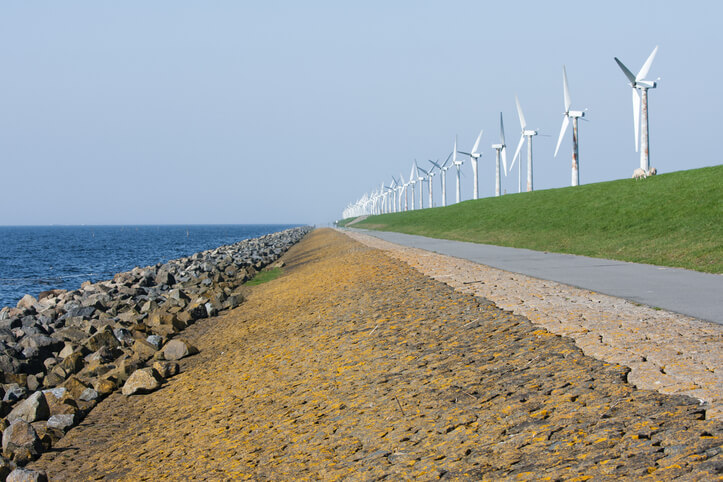What Does
Berm Mean?
A berm is a ridge or barrier constructed of compacted soil, gravel, rocks, and stones to prevent, divert, or direct water away from a particular area. It is constructed as a level space or mound that separates two areas.
In trenchless construction technology, berms are constructed in order to prevent erosion and sedimentation, and in some cases as a means to provide for a safe working environment during excavation by controlling surface runoff.
Larger berms required for certain projects are constructed in layers which is cost-saving and aids in its aesthetic quality. In such berms, the lower layer consists of fill material, either gravel, rubble, or asphalt which will make up a large portion of the berm.
Above the fill layer, a layer of clay is laid to aid in the retention of the topsoil. However, some municipal ordinances require that a berm be made predominantly of clay and the top layer of the berm should consist of high-quality topsoil. Generally, the most effective berms are asymmetrical.
Trenchlesspedia Explains Berm

Berms are constructed of different materials such as gravel, stone, soil, crushed rock, or a combination of these materials. When soil is used for berm construction, it is of the silt or clay type mixed with rock or gravel. The berm is designed to be of sufficient height to prevent water from overtopping it, and the width at the top of the berm is approximate twice its height.
To prevent erosion of the berm, the upstream side can be lined with a channel liner. Permanent berms are used to intercept and divert water to sediment traps or outlets. The berms are constructed as flat as possible to prevent erosion and drain effectively.
Berm Applications
Berms can be used for various applications in different site conditions. Berms help direct water to ditches, channels, sediment trap basins, etc. They can serve both temporary and permanent erosion controls and can be left in place for the entire project.
Berms are also effective in preventing runoff water from entering or overflowing slopes and for diverting overflow water after it comes off the slope. Runoff from a road or slope can be intercepted by a berm if present and water can be directed to a sediment trap basin or drain.
In dug up construction sites, a berm around the perimeter will prevent water from outside the site to enter. In cases where the site is next to a stream or lake, a berm can prevent high water from entering the site.
In trenchless construction methods, work is carried out from launching shafts and retrieving shafts dug up to the pipe installation level. These shafts also require protection from runoff water entering the shaft for workers to work in dry conditions.
Berm Limitations
Berms cannot be used in the bed of water bodies and should not be used as a means to filter water. It is usually best for minor runoffs and small drainage areas. The berms can get washed out and to prevent this, they need to be properly keyed and compacted. The design should be such that it can avoid washout or erosion when diverted water or runoff is concentrated and has a high velocity.